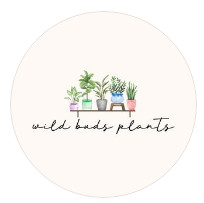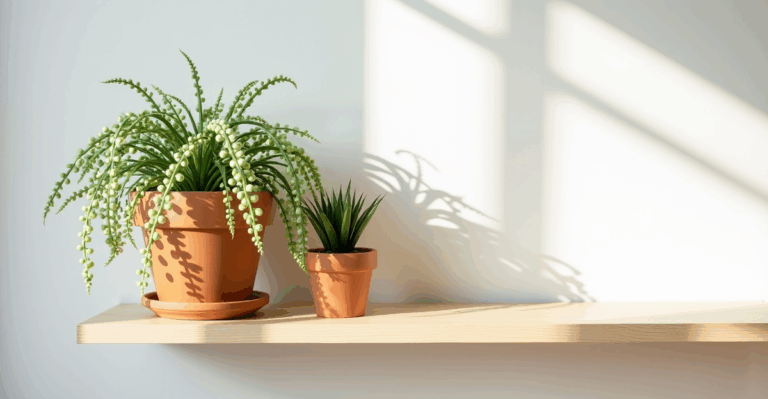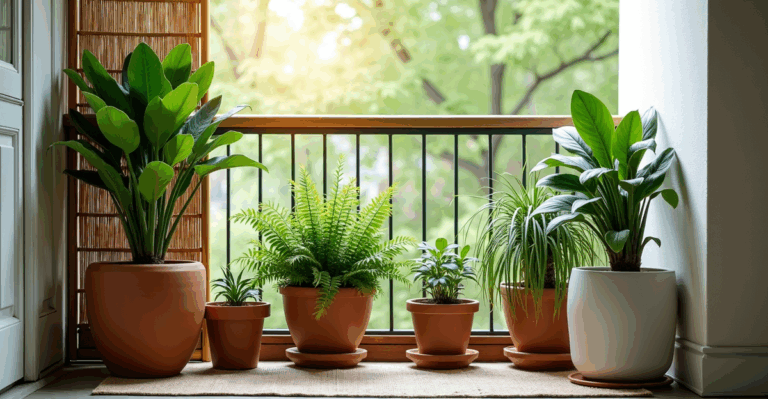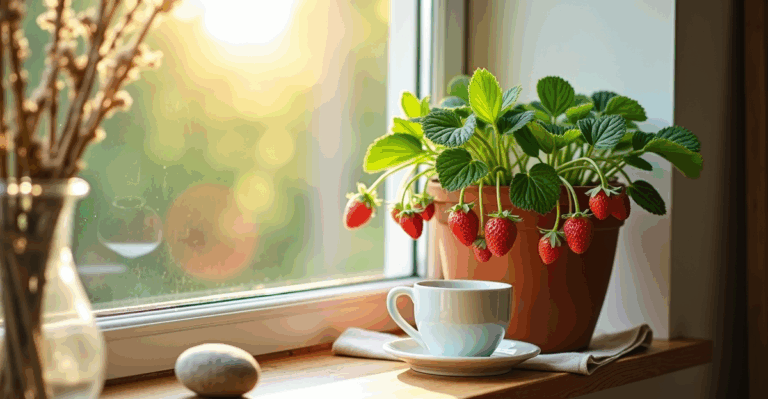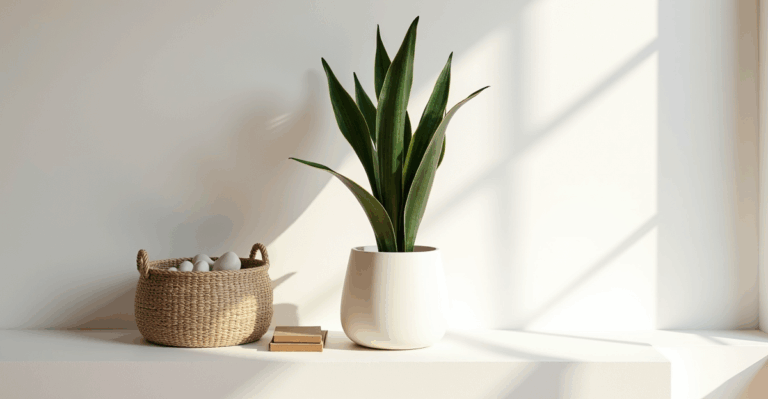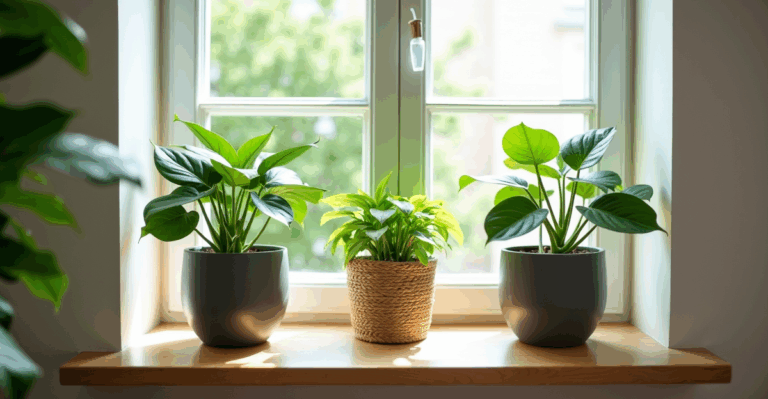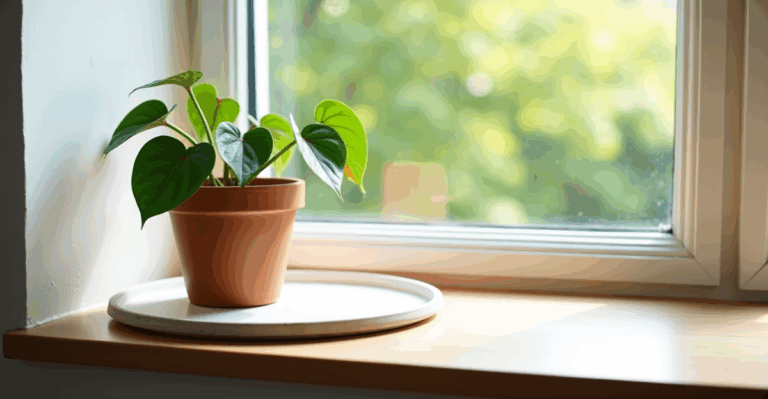Your Bathroom’s Secret Weapon: Philodendrons That *Actually* Thrive on a Narrow Windowsill
You’ve got that perfect little window ledge above your sink—just wide enough for a single plant, but too narrow for anything standard. You’ve tried a pothos, but it just drooped like a wilted ribbon. Or maybe you’ve got a beautiful philodendron you know needs humidity, but you’re terrified to put it in the bathroom because of the “dampness” (and you’ve seen the horror stories). We’ve all been there. That moment when you realize your bathroom isn’t a plant killer—it’s your best spot for specific greens, if you choose the right variety and the right container.
The magic? Bathrooms are naturally humid (hello, steamy showers!), often have bright, indirect light through windows, and are warm. But most plants hate the constant moisture on their roots from steam or splashes. And a standard 6-inch pot won’t fit on a 4-inch sill. It’s not about the bathroom being bad—it’s about matching the plant’s needs to the space, and the container to the ledge. Forget the hype; let’s find your perfect philodendron partner for that little ledge.
Why Bathroom Humidity Isn’t a Dealbreaker (It’s Actually a Win)
Most people panic about bathroom humidity, thinking it means “root rot city.” But here’s the reality: Philodendrons are native to humid rainforests. They thrive in that environment. The real issue isn’t the humidity—it’s overwatering in a poorly draining container. Bathrooms often have less direct sun than a sunny kitchen, so your watering schedule needs to slow down. Let the top 2–3 inches of soil dry out before you water again. That’s key. A standard pot with a drainage hole is still essential—you don’t want water pooling at the bottom. A bathroom’s steamy air won’t drown your plant if it’s got proper drainage and you’re not misting it like a tropical spa (which can actually promote pests like spider mites).
Top Philodendron Picks for Your Humid, Low-Light Bathroom
Not all philos are created equal for this space. Here are our go-tos, based on real bathroom conditions (not just pretty pictures):
- ‘Birkin’ (Philodendron hederaceum ‘Birkin’): Our top recommendation for narrow sills. It tolerates lower light better than many variegated plants (think east-facing window or just outside a bathroom window) and loves humidity. Its bold, white-striped leaves are stunning. Care nuance: Needs consistent moisture but not soggy soil. Water when the top inch feels dry. Avoid cold drafts near open windows. Why it works: Its compact growth (usually 1–2 ft tall) fits perfectly on a 4–5 inch ledge without needing a huge pot.
- ‘Moonlight’ (Philodendron hederaceum ‘Moonlight’): Similar care to ‘Birkin’ but with a lighter, almost lime-green variegation that glows under bathroom light. It’s slightly more forgiving of lower light than ‘Birkin’ (great for north-facing bathrooms). Care nuance: Can get leggy quickly if light is too low—rotate it slightly every few weeks to encourage even growth. Why it works: Its smaller, rounded leaves and moderate size make it feel intentional on a tight space, not overwhelmed.
- Heartleaf Philodendron (Philodendron hederaceum): The classic, super easy choice. It’s very tolerant of lower light and humidity. Care nuance: It will grow fast and send out long vines (perfect for cascading over a windowsill edge!), but it will get leggy if light is too dim. Avoid variegated heartleaf if your bathroom is truly low-light (the green parts photosynthesize better than pale variegation). Why it works: Its vigorous, trailing habit makes the narrowness of the ledge work for you—it naturally flows off the edge.
Why not Split-Leaf? Philodendron lacerum (like ‘Birkin’ or ‘Moonlight’) needs more light than most bathrooms provide. It will stretch, lose leaves, and get sick. Save it for a sunnier kitchen window.
The Narrow Windowsill Problem: Why Standard Planters Fail (And How to Fix It)
This is the real pain point. Most pots are too wide or deep for a typical bathroom ledge. A standard 6-inch pot sits 2 inches wider than a 4-inch ledge, leaving no room for the plant to sit securely. It’ll tip over the moment you water it. Or, you buy a “narrow” pot, but it’s shallow, and the roots grow out of the bottom, or it doesn’t hold enough soil for consistent moisture.
Here’s the key insight: The pot must be only as wide as the ledge is deep. If your ledge is 4 inches deep, your pot can’t be more than 4 inches wide. And it needs to be deep enough to hold soil without drying out too fast (2–3 inches deep is ideal for small plants like these philos). Standard pots are usually 6+ inches wide and 5+ inches deep—they’re designed for floor space, not ledges.
The (Simple) Solution: A Planter That Fits and Works
This is where 3D-printed planters become the quiet hero. They’re not about fancy tech—they’re about perfect design for your specific space. We’ve seen them in our own bathrooms: slim, deep enough to hold soil without drying out too fast, and with a smooth, modern finish that doesn’t clash with your shower tiles.
Why they’re the right fit:
* Exact Width: They come in precise widths (like 3.5″ or 4.25″) that match narrow ledges.
* Optimal Depth: Deep enough (2–3″) for soil moisture retention without being soggy.
* Drainage: They have a proper drainage hole (no more guessing if it’s blocked).
* Weight & Stability: Lightweight enough to sit securely on a ledge without tipping, but sturdy enough not to feel flimsy.
* Style: They look intentional, not like a leftover pot from a garage sale.
Edge Cases & Trade-Offs:
* Self-Watering? Skip it for bathrooms. The constant moisture can overwhelm the plant, even with good drainage. Stick to manual watering based on soil feel.
* LECA/PON? Possible for ‘Birkin’ or ‘Moonlight’ if you’re experienced, but it’s a step up. LECA needs consistent humidity (which you have!), but it’s trickier to manage moisture levels. For beginners in a bathroom, a good soil mix (like 50% potting mix + 50% perlite) is simpler and just as effective.
* Pests? Humidity can attract fungus gnats. Solution: Use a well-draining mix (no extra peat or compost), let soil dry slightly between waterings, and keep the ledge clean (no standing water under the pot).
Making It Work: Your Bathroom Philodendron Routine
- Choose Your Plant: Go for ‘Birkin’ or ‘Moonlight’ for the best look and care balance on a narrow ledge. Avoid Split-Leaf, ‘Prince of Orange,’ or overly variegated types if your light is limited.
- Get the Right Pot: Measure your ledge depth first. A 3.5″ or 4″ wide pot is the sweet spot for most bathroom ledges. This is where the 3D-printed planter shines—it’s designed for this exact space.
- Plant Properly: Use a well-draining mix (standard potting mix + 1/2 perlite). Don’t pack the soil tightly. Place the plant in the pot, fill with soil, and water thoroughly until it drains out the bottom.
- Water Wisely: Check the top 2–3 inches of soil with your finger. If it feels dry, water until it drains. If it’s still damp, wait. Bathrooms dry slower than kitchens, so you’ll water less often.
- Rotate for Even Growth: Turn the pot a quarter-turn every 2 weeks to keep the leaves evenly lit.
- Clean Your Ledger: Wipe away any condensation or splashes with a dry cloth. Place a small, absorbent tray under the pot (like a ceramic tile) to protect your surface without trapping water.
The Real Reason This Works: It Fits Your Life
You don’t need a fancy grow light or a greenhouse cabinet for your bathroom philodendron. You just need the right plant in the right container for your actual space. The ‘Birkin’ or ‘Moonlight’ on a perfectly sized, well-draining pot will thrive, adding life and calm to your morning routine. It’s not about overcoming a challenge—it’s about using the natural advantages of your bathroom (humidity, warmth, indirect light) to make your plant happy.
We’ve tried the standard pots, the deep planters, and even tried to wedge plants into corners. It never quite worked until we found the right fit. That’s why we design our 3D-printed planters: to solve the real problem of space and function in a way that feels effortless.
When you’re ready to grow your setup, explore our 3D-printed planters.
